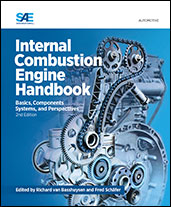Technical Paper
Active Noise Control for the 4.0 TFSI with Cylinder on Demand Technology in Audi's S-Series
2012-06-13
2012-01-1533
To significantly increase fuel efficiency while keeping power and performance of its signature S models, AUDI developed a new 4.0 TFSI engine with Cylinder on Demand technology and introduced it with its new S6, S7 and S8 models. To manage upcoming NVH issues due to this new technology and keep the intended sporty V8 note of the engine under all operating conditions, a broad range of new and advanced technologies was introduced with these vehicles. This paper focusses on the Active Noise Control system and its development. It describes the ANC system from a control theory perspective in addition to the acoustical perspective. Special features of the system include the availability of multiple tunings (4/8 cylinder mode) to support the specific overall sound character and the fast switching process as switching between different cylinder configurations might be as fast as 300 ms. In addition, the system also includes specific features that allow an advanced audio system diagnosis.



